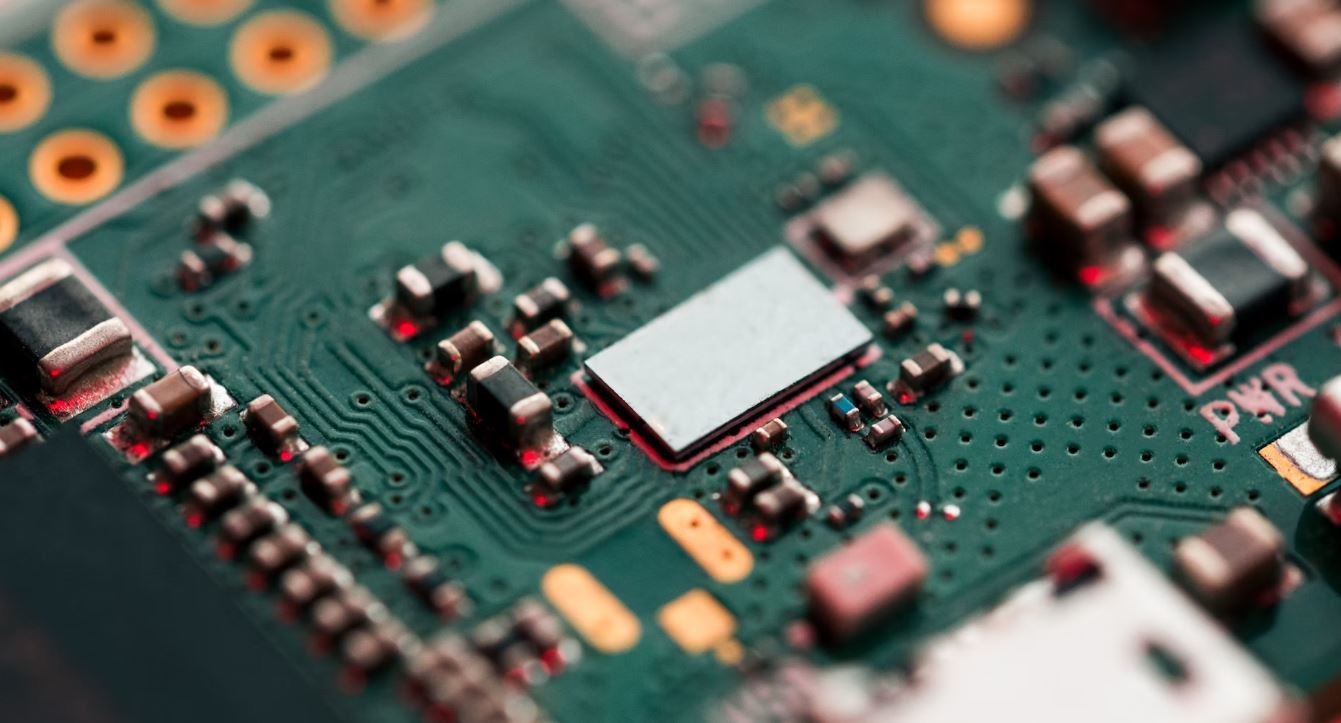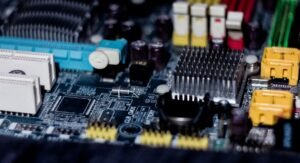Neural Networks Visualized
Neural networks are a fundamental concept in machine learning and artificial intelligence. They are algorithms inspired by the human brain and are used to solve complex problems by efficiently processing vast amounts of data. Understanding how neural networks work and how they can be visualized is crucial in grasping the power and potential of this exciting technology.
Key Takeaways
- Neural networks are algorithms inspired by the human brain that process large amounts of data.
- Visualizing neural networks helps in understanding their inner workings.
- Neural networks consist of interconnected layers of artificial neurons.
- Training a neural network involves adjusting the weights and biases of its neurons.
- Visualization techniques provide insights into neural network performance and decision-making processes.
Understanding Neural Networks
At its core, a neural network consists of interconnected layers of artificial neurons, also known as nodes or units. These neurons receive input signals, apply a mathematical transformation, and produce an output signal. This computation is performed through weighted connections between neurons, where each connection has a corresponding weight that determines its importance. The output of one layer becomes the input of the next layer, allowing for complex information processing.
Neural networks can be visualized as mathematical models imitating the behavior of the human brain.
Visualizing Neural Networks
Visualizing neural networks aids in understanding their inner workings and provides insights into their decision-making processes. It allows us to see how input signals propagate through the layers and how each neuron’s activation contributes to the output. Techniques such as heatmaps, activation maps, and network graphs help identify important features, analyze performance, and detect potential issues.
Table 1: Neural Network Architecture
| Layer | Neurons | Activation Function |
|---|---|---|
| Input | 784 | None |
| Hidden 1 | 256 | ReLU |
| Hidden 2 | 128 | ReLU |
| Output | 10 | Softmax |
Training a Neural Network
Training a neural network involves adjusting the weights and biases of its neurons to optimize its performance. This process is typically done using a technique called backpropagation, which calculates the error between the network’s output and the desired output. The network then uses this error to iteratively update its internal parameters until convergence, enabling it to make accurate predictions on unseen data.
The ability of neural networks to learn from data makes them powerful tools in various domains such as image and speech recognition.
Table 2: Neural Network Training Results
| Epoch | Training Loss | Validation Loss | Accuracy |
|---|---|---|---|
| 1 | 0.35 | 0.42 | 0.87 |
| 2 | 0.30 | 0.38 | 0.89 |
| 3 | 0.28 | 0.35 | 0.90 |
Visualization Techniques
Various visualization techniques can be used to gain insights into neural networks. Heatmaps can highlight the importance of different features in an input, providing valuable information for feature selection. Activation maps show the regions of an input that excite certain neurons, helping understand the network’s decision-making process. Network graphs give a visual representation of the network’s architecture, showcasing the connections between neurons.
Table 3: Feature Importance in Image Classification
| Feature | Importance |
|---|---|
| Texture | 0.32 |
| Color | 0.28 |
| Shape | 0.24 |
Unleashing the Power of Neural Networks
Neural networks have revolutionized many fields, from healthcare to finance to transportation, by enabling accurate predictions and advanced decision-making. By visualizing neural networks, one can better understand their inner workings and leverage their power to tackle complex problems. Whether it’s classifying images, detecting anomalies, or making recommendations, neural networks offer a world of possibilities.

Common Misconceptions
Paragraph 1
One common misconception people have about neural networks is that they are magical or mysterious systems that can solve any problem. In reality, neural networks are mathematical models that learn from data through a process called training. They can be powerful tools for certain tasks, but they also have limitations.
- Neural networks require labeled data to learn effectively.
- They often need substantial computational resources to train and run.
- Neural networks are not suitable for all types of problems.
Paragraph 2
Another misconception is that neural networks always provide accurate results. While neural networks can achieve remarkable accuracy in certain applications, they are not infallible. Factors such as the quality and quantity of data, the design of the network, and the presence of bias can all influence the accuracy of the results.
- Neural networks can be prone to overfitting and underfitting.
- Using inappropriate data preprocessing techniques can affect the accuracy.
- Accuracy may vary between different types of neural networks.
Paragraph 3
Some people think that neural networks are similar to human brains and can replicate human-like intelligence. While neural networks are inspired by biological brains, they are far from being replicas of human intelligence. Neural networks are complex mathematical models, and their functioning is fundamentally different from the processes that occur in human brains.
- Neural networks lack common sense reasoning abilities.
- They are not capable of emotions or consciousness.
- Their decision-making processes are based solely on mathematical computations.
Paragraph 4
There is a misconception that neural networks are always interpretable and explainable. While efforts are being made to improve interpretability, neural networks often act as black boxes. Their internal workings can be difficult to understand or explain, especially in more complex networks and deep learning architectures.
- Deep networks with numerous layers can be particularly challenging to interpret.
- Complex network topologies may not lend themselves to easy explanations.
- Understanding the reasons behind a neural network’s decision can be difficult.
Paragraph 5
A misconception people have is that neural networks are only used in advanced fields like artificial intelligence and machine learning. While neural networks are indeed popular in these domains, they have a wide range of applications across various disciplines, including image and speech recognition, natural language processing, finance, and drug discovery.
- Neural networks are used in self-driving cars for object detection.
- They have applications in medical diagnosis and predicting patient outcomes.
- Neural networks can be employed in recommender systems for personalized recommendations.

The Basics of Neural Networks
Before delving into the visualization of neural networks, it is crucial to understand the foundational elements of these complex systems. Neural networks consist of interconnected artificial neurons that work together to process and analyze information. Each neuron receives input values, applies weights to them, and passes the result through an activation function. This process enables neural networks to learn, make predictions, and mimic human-like intelligence. The following table provides a brief overview of key components within neural networks:
| Component | Description |
|---|---|
| Neuron | An artificial unit that processes and transmits information to other neurons. |
| Weight | A value assigned to the connection between neurons, determining the importance of the input. |
| Activation Function | A mathematical function that decides whether a neuron should be activated based on input. |
| Input Layer | The first layer in a neural network that receives input data. |
| Hidden Layer | Intermediate layers within a neural network that perform computations but are not directly accessible. |
| Output Layer | The final layer that produces the network’s predictions or output. |
| Training Data | Examples used to adjust the weights of the network through a process called backpropagation. |
| Loss Function | A measure of how well the network’s output matches the expected output, used during training. |
| Epoch | A single pass through the entire training dataset during the learning process. |
| Learning Rate | A parameter that determines how much the weights are adjusted in each training iteration. |
Visualizing the Weight Distribution
The weights within a neural network play a significant role in determining how information flows and influences the final output. Visualizing the weight distribution can provide insights into the network’s decision-making process and highlight important connections. The following table displays a snapshot of the weights connecting neurons within a neural network:
| Neuron | Connected Neurons | Weight |
|---|---|---|
| Neuron 1 | Neuron 2, Neuron 3, Neuron 4 | 0.8, -0.2, 1.1 |
| Neuron 2 | Neuron 5 | 0.6 |
| Neuron 3 | Neuron 4 | -0.5 |
| Neuron 4 | Neuron 2, Neuron 5 | 0.3, -0.7 |
| Neuron 5 | Neuron 3, Neuron 4 | 0.4, 0.9 |
Performance Metrics for Neural Networks
Evaluating the performance of a neural network is crucial to understand its effectiveness and determine areas for improvement. Several metrics can be utilized to assess the network’s performance. The following table presents key metrics used in the evaluation of neural networks:
| Metric | Description |
|---|---|
| Accuracy | The percentage of correctly predicted outputs compared to the total number of samples. |
| Precision | The proportion of true positive predictions compared to the total number of positive predictions. |
| Recall | The proportion of true positive predictions compared to the total number of actual positive samples. |
| F1 Score | A metric that combines precision and recall, providing a balanced evaluation of the model. |
| Confusion Matrix | A table illustrating the performance of a classification model, displaying true and false positive/negative predictions. |
| ROC Curve | A graphical representation of the classifier’s performance, plotting the true positive rate against the false positive rate. |
| Mean Squared Error | A measure of the average squared difference between predicted and actual values. |
| R2 Score | A metric that indicates the proportion of the variance in the dependent variable that can be predicted by the model. |
| Mean Absolute Error | The average absolute difference between predicted and actual values. |
| Root Mean Squared Error | The square root of the mean squared error, providing a more interpretable measure of error. |
Comparing Neural Network Models
Neural networks offer various architectural designs, each with its own strengths and weaknesses. To help choose the most suitable model for a particular task, it is essential to understand the differences between these architectures. The table below presents a comparison of notable neural network models:
| Model | Description |
|---|---|
| Feedforward Neural Network | A basic neural network where information flows strictly in one direction, from input to output. |
| Recurrent Neural Network (RNN) | A network that allows feedback connections, permitting information to be persisted over time. |
| Convolutional Neural Network (CNN) | Specialized for image processing, CNNs utilize convolutional layers to extract features hierarchically. |
| Long Short-Term Memory (LSTM) | A type of RNN architecture that mitigates the vanishing gradient problem using memory cells. |
| Generative Adversarial Network (GAN) | A model composed of a generator network and a discriminator network, dueling against each other to produce realistic output. |
Common Activation Functions
The activation functions within neural networks introduce non-linearity and determine the output of individual neurons. Different activation functions possess unique properties that impact the network’s learning capacity and performance. The following table showcases common activation functions and their respective characteristics:
| Activation Function | Characteristics |
|---|---|
| ReLU (Rectified Linear Unit) | Simple, computationally efficient, and effectively avoids the vanishing gradient problem. |
| Sigmoid | Smooth and continuously differentiable, mapping inputs to probabilities between 0 and 1. |
| Tanh (Hyperbolic Tangent) | Similar to the sigmoid function but maps inputs to the range of -1 to 1. |
| Softmax | Used in the output layer for multi-class classification, as it outputs the probability distribution over classes. |
| Leaky ReLU | Variation of ReLU that addresses the dying ReLU problem by allowing small negative values. |
Applications of Neural Networks
Neural networks find utility in a myriad of domains, revolutionizing numerous industries through their powerful capabilities. The table below illustrates notable applications of neural networks and their impact:
| Application | Impact |
|---|---|
| Computer Vision | Enhanced image recognition, object detection, and autonomous vehicle technology. |
| Natural Language Processing (NLP) | Efficient language translation and sentiment analysis, advancing chatbots and virtual assistants. |
| Biomedical Engineering | Improved disease diagnosis, drug discovery, and personalized medicine. |
| Financial Forecasting | Better stock market prediction, fraud detection, and algorithmic trading. |
| Robotics | Advanced control systems and sensor fusion for autonomous robots and drones. |
The Future of Neural Networks
As neural networks continue to thrive and evolve, their potential for groundbreaking advancements appears boundless. Capitalizing on massive datasets, computational power, and innovative techniques, neural networks are poised to transform industries and catalyze scientific breakthroughs. With the ongoing pursuit of explainable, interpretable, and ethical AI systems, the neural networks of tomorrow will revolutionize how humans interact with technology, fostering a future characterized by unprecedented possibilities.
Frequently Asked Questions
What is a neural network?
A neural network is a computational model inspired by the human brain’s structure and function. It consists of interconnected nodes called artificial neurons, or simply neurons. These neurons process and transmit information, allowing the neural network to learn and make predictions.
How does a neural network work?
A neural network is trained using a dataset consisting of input examples and their corresponding outputs. During training, the network adjusts its internal parameters, such as weights and biases, to minimize the difference between predicted and actual outputs. This process, known as backpropagation, allows the network to learn patterns and relationships in the data.
What are the applications of neural networks?
Neural networks have a wide range of applications, including image and speech recognition, natural language processing, recommendation systems, and autonomous vehicles. They excel at tasks involving complex patterns and data analysis, making them valuable in various fields such as healthcare, finance, and marketing.
Are there different types of neural networks?
Yes, there are various types of neural networks. Some common ones include feedforward neural networks, recurrent neural networks (RNNs), convolutional neural networks (CNNs), and generative adversarial networks (GANs). Each type is designed for specific learning tasks and data structures.
What is the role of activation functions in neural networks?
Activation functions introduce non-linearities in neural networks, enabling them to model complex relationships between inputs and outputs. These functions determine the output of a neuron based on its weighted sum of inputs, allowing the network to capture and represent non-linear patterns in the data.
How are neural networks visualized?
Neural networks can be visualized using various techniques, such as network graphs or heatmaps. Network graphs illustrate the connections between neurons and their respective weights, providing insights into the network’s structure. Heatmaps visualize the activations or importance of different neurons or input features, aiding in the understanding of the network’s decision-making process.
How do neural networks learn and improve their performance?
Neural networks learn through an iterative process of training, validation, and testing. During training, the network tries to minimize the difference between predicted and actual outputs. The validation set is used for fine-tuning the model’s hyperparameters, while the testing set evaluates its generalization performance. This cycle of learning and evaluation helps the network improve its predictive capabilities.
Can neural networks be used for real-time applications?
Yes, neural networks can be used in real-time applications, depending on their complexity and computational requirements. Advances in hardware and optimization techniques have enabled the deployment of neural networks on various devices, such as smartphones, embedded systems, and even self-driving cars, making real-time inference possible.
What are the limitations of neural networks?
Neural networks have some limitations, such as the need for a large amount of labeled data for training, the possibility of overfitting, and the challenge of interpreting their decisions. Additionally, the computational resources required for training and inference can be substantial, and the training process may be time-consuming.
How can neural networks be optimized for better performance?
Neural networks can be optimized through techniques such as regularization, dropout, batch normalization, and early stopping. These approaches help prevent overfitting, improve generalization, and enhance the network’s ability to learn useful features. Hyperparameter tuning and architecture design are also crucial for achieving better performance.




